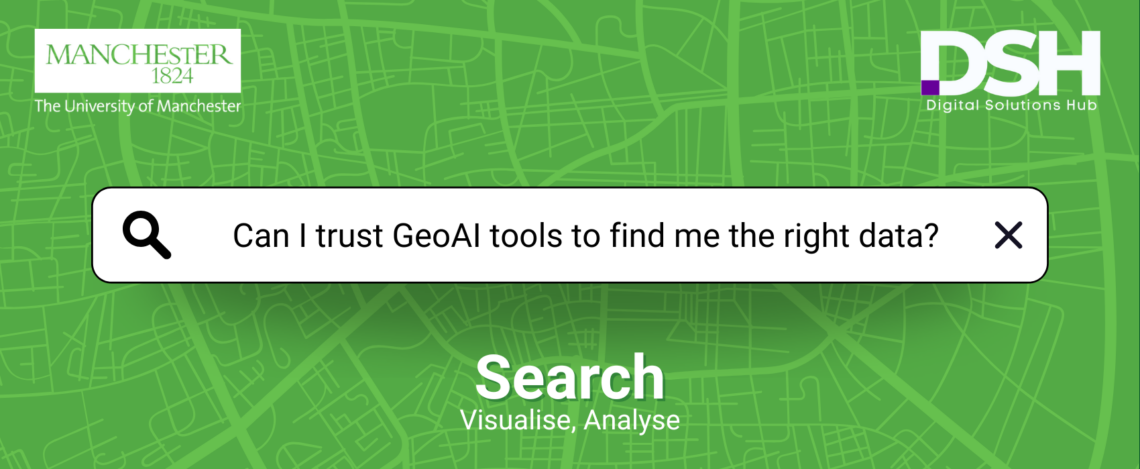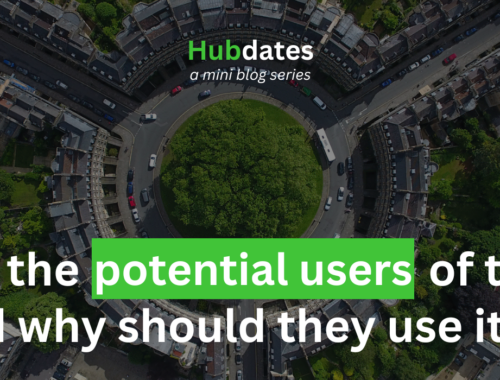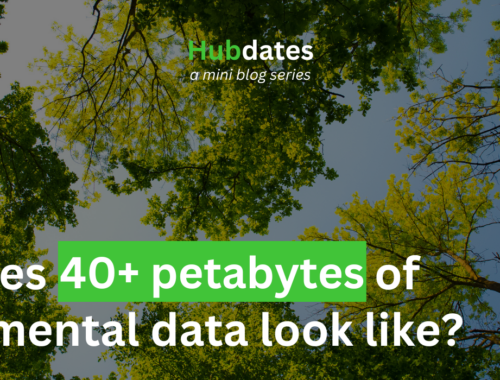
GeoAI: Overcoming the Hype and Avoiding Hallucinations
As artificial intelligence (AI) continues to reshape how we interact with data, the geospatial world is no exception. At this year’s GEO Business event, Professor Richard Kingston, Director of the NERC Digital Solutions Programme delivered a compelling talk titled “GeoAI: Overcoming the Hype and Avoiding Hallucinations” addressing the rising enthusiasm around GeoAI while offering a crucial counterbalance looking at the risks of AI-driven misinformation or in AI terms, hallucination.
The Hype versus Reality of GeoAI
Many organisations are racing to deploy GeoAI tools, enticed by their ability to uncover insights, generate maps, and respond to complex queries. But as pointed out in the talk, building something does not guarantee it will be used, or trusted. The notion of “build it and they will come” does not always lie true and it is essential that what you build is driven by user needs.
Users don’t just want access to data—they want services. They want apps, dashboards, storytelling tools, and collaborative platforms. Most importantly, they want answers they can trust.
When AI Hallucinates the Landscape
A striking example comes from a query to a Large Language Model (LLM). When asked about wildfire risk in the Thames Estuary, the LLM confidently produced a plausible but entirely inaccurate paragraph about peatland wildfire risk in a mostly urban, low-lying tidal wetland. This ‘hallucinated’ output stated:
“Recent climate models suggest that rising summer temperatures and declining soil moisture in the Thames Estuary could increase the risk of peatland wildfires by 2080. These events pose a serious threat to the region’s carbon sinks and biodiversity corridors, particularly in areas of unmanaged wetland.”
What this illustrates is a textbook GeoAI hallucination: the model stitched together convincing sounding terms including “peatland,” “wildfire,” “climate change” despite no scientific or spatial basis for the claim as the Thames Estuary is mostly urban, salt marsh, and mudflats where wildfires in low-lying tidal wetlands are extremely rare.
Grounding AI with Retrieval-Augmented Generation (RAG)
To counter these hallucinations in the DSH we have deploying what is called a RAG approach (Retrieval-Augmented Generation). This approach ensures the LLM does not invent answers from scratch, instead, it retrieves factual, relevant knowledge from trusted datasets before generating responses. In the case of DSH we have built a database of all the NERC metadata which the AI tool uses to respond to queries by the user. Constraining your search to your own data is the most important take-away here. When we ask the same question using Claude-AI and our RAG approach connected to the NERC meta-data database the LLM correctly retrieves information about salt marsh erosion under sea level rise, grounded in the following data:
- Met Office UKCP18 projections
- LiDAR and habitat classification data
- British Oceanographic Data Centre data
- Real shoreline management plans (SMPs)
We get the following answer: “According to UKCP18, salt marshes in the Thames Estuary are projected to retreat inland by over 2 km by 2080 due to accelerated tidal velocity and sediment starvation. Studies by the Marine Ecology Institute (2021) warn that this erosion could eliminate over 60% of estuarine marshes unless adaptive relocation is implemented.”
How It Works: From Query to Insight
The RAG pipeline we are using takes the following approach:
- Ingest: Load and segment documents into searchable chunks.
- Query Reformulation: AI rephrases user input for clarity.
- Retrieve: Vector search identifies the most relevant data.
- Generate: The LLM creates a summary answer based only on retrieved content.
The next phase in our development is to integrate this with what is called LangChain, enabling function-calling to invoke APIs, spatial queries, or databases allowing us to link LLMs and traditional GIS systems. We now have a working demo where you can query spatial data using natural language and this generated an interactive digital map.
The Bigger Picture: NERC’s Digital Solutions Hub
This RAG-powered system is just one part of what DSH is delivering, as a national facility we are aiming to make over 40 petabytes of environmental data FAIR (Findable, Accessible, Interoperable, Reusable).
Rather than creating another static data portal, we have a vision for user-facing services: tools that enable storytelling, data integration, map generation, and actionable insights—without requiring expert software or powerful hardware.
You May Also Like

The Second User Research Report for the DSH is released
24 May 2024
Hubdate #4 – Digital Solutions Hub: Who are the potential users and why should they use it?
10 April 2025

